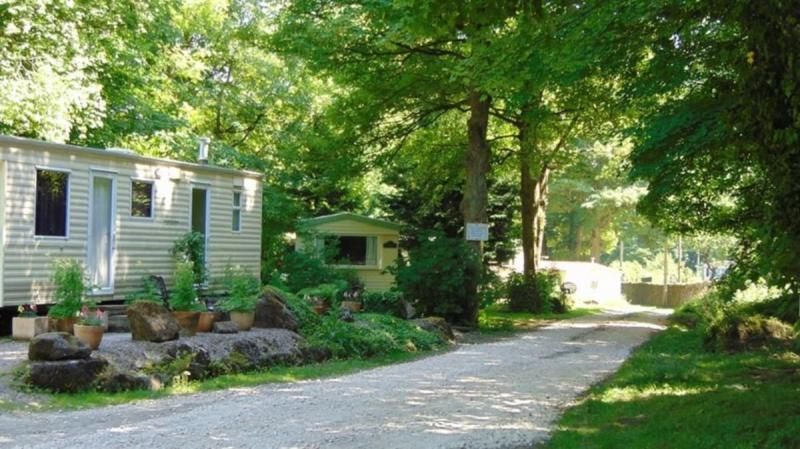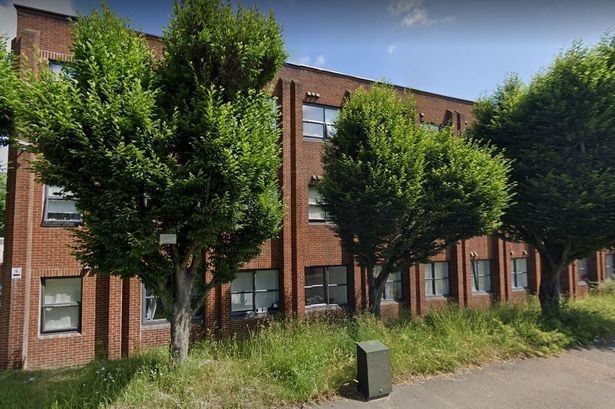Islington v Maxwell Estates
Izindi Visagie • 31 October 2019
Lawfulness of a dwellinghouse

Islington Council has been in the planning courts rather a lot of late, but this month there is a High Court decision in their favour. And rightly so. The case does not particularly raise new legal points, but confirms the importance of the Swale and Thurrock cases in determining immunity on changes of use and clarifies the place of Gravesham (which assists with the definition of a dwellinghouse).
The facts are:
1. In early 2013 Maxwell Estates converted the basement of their building into a residential flat and started renting it out from 11 April 2013. The first tenant lived there until 10 October 2013, when he moved out.
2. From November 2013 Maxwell Estates gutted the basement during renovation works which continued until shortly before May 2014.
3. New tenants moved into the basement from May 2014 and it appears the flat was then more or less continually used thereafter.
4. There was therefore a gap in occupation between 10 October 2013 and May 2014.
5. In November 2017 Maxwell Estates applied for a certificate of lawfulness on the basis that the basement had been in residential use for more than 4 years.
6. The certificate was refused and enforcement action was taken on 12 January 2018.
7. Maxwell Estates appealed under grounds (d), (f) and (g) of section 174(2) TCPA 1990 and the appeal was heard at an Inquiry. The Inspector allowed the ground (d) appeal and determined that the basement had been in continuous use as a dwelling from at least 11 April 2013, including during the period of renovations from October 2013 to May 2014 and therefore a material change of use occurred more than 4 years before the enforcement notice was issued.
8. The Council appealed under s289 TCPA and challenged the Inspector’s conclusion that there had been continuous use during the renovations between October 2013 and May 2014. The grounds of appeal were fourfold, but for the purposes of this article, the focus is on a single one: The Inspector misunderstood and/or misapplied the law regarding immunity from enforcement action taken against a material change of use.
The judgment then sets out the statutory framework for lawfulness and very usefully sets out the relevant caselaw.
The Council argued that the Inspector ought to have applied the guidance in the cases of Thurrock Borough Council v Secretary of State for the Environment [2002] EWCA Civ 226, [2002] JPL 1278 (upholding the judgment of the High Court, reported at [2001] JPL 1388) and Swale v Borough Council v Secretary of State for the Environment [2005] EWCA Civ 1568, [2006] JPL 886.
In deciding whether or not there had been continuous use, the Inspector wrongly applied a presumption of continuance, and took into account impermissible factors such as Maxwell Estate's intentions.
The Secretary of State and Maxwell Estates argued that whereas residential use had to be continuous for the landowner to obtain the benefit of the immunity, continuous occupation was not required. In support, they relied on Gravesham BC v Secretary of State for Environment (1984) 47 P & CR 142 and others.
The Secretary of State and Maxwell Estates also submitted that where, as in this case, there was an interruption in occupation, it was a matter of fact and degree whether the use continued or had ceased. The Inspector lawfully exercised his planning judgment when deciding that the residential use was continuous.
At times the Council argued that it was not ‘practicable’ to enforce against the unlawful use for the period during which the renovations took place. However, Mrs Justice Lang confirmed that this was not part of the statutory test.
Mrs Justice Lang determined that the Inspector ought to have applied the guidance in Thurrock and Swale. During the period when the residential unit was stripped down to a shell unit, and the unauthorised residential use and breach of planning control had ceased, the Council could not have taken enforcement action, even if the owner intended to resume residential use at a later date. She said: “In my view, there was a single test, namely, a continuous breach by use as a dwelling, such that the planning authority could have enforced against the breach”
Submissions on Gravesham clearly confused the inspector. In her closing submissions at the inquiry, counsel for Maxwell Estates said:
"Gravesham therefore establishes that continuous residential occupation is not a requirement for a building to be "a dwelling house" and that, therefore, "use as a single dwelling house" does not require continuous residential occupation either…".
However, Gravesham is not an enforcement case and so the court in that case was not applying the test under s171B(2) TCPA 1990. It was not relevant for the Judge in Gravesham to determine the difference between immunity and abandonment. The correct test for establishing lawfulness of a dwellinghouse, is in fact that set out in Thurrock and Swale, i.e. continuous uninterrupted use, such that the planning authority could have enforced against the breach.
Mrs Justice Lang found that the inspector’s reliance upon counsel’s submission in the closing submissions at the inquiry led to an error of law in his decision.
Welwyn Hatfield and Impey were similarly distinguished because they concerned operational development to create a dwellinghouse, not a change of use of a building to use as a dwellinghouse.
Mrs Justice Lang concluded that the Inspector misdirected himself in law and misapplied the relevant case law and accordingly allowed the appeal.
London Borough of Islington v SoS & Maxwell Estates limited [2019] EWHC 2691 (Admin)
https://www.bailii.org/ew/cases/EWHC/Admin/2019/2691.html

Given its portrayal of the planning system so far, it is almost a given that season 3 of Clarkson’s Farm will not accurately present the detail of the Diddly Squat appeal decision. Here is our take. The decision is here. In summary, the LPA won almost all of the enforcement points. But simply being Jeremy Clarkson is apparently a material consideration which alters the planning balance! While he is popular, his celebrity is such that his farm shop will create significant problems beyond those of an ordinary farm shop and the inspector decided that these are problems which have already been accepted in granting his existing permission. Fewer of the harms to the AONB can therefore be attributed to the additional elements of the use. And these harms are outweighed by the economic benefits, benefits which are a result of his celebrity. So permission was granted for his farm shop and café and the associated parking and toilets. Clarkson’s popularity will be re-assessed in 3 years as the permission is time limited. Perhaps the inspector knows something we don’t. As viewers will know, Clarkson’s Farm operates in open countryside in an AONB. As well as agriculture, it has diversified to include a farm shop and a café in a lambing barn. The business tried to open a restaurant in a converted barn located some distance from the shop. The site is obviously used as a filming location. The business has proved popular and it now has significant parking and highway problems. The farm shop (with limited parking) has permission, the construction of the lambing barn (but not its use) has permission and there is permission for limited filming. The council enforced against the material change of use of the land to a mixed agricultural and leisure attraction use, comprising café, restaurant, gift/farm shop, parking and lavatory facilities. The notice was appealed. The appellant also sought (and was refused) permission for additional parking, access, storage and landscaping. This appeal was heard alongside the enforcement appeal. The inspector dealt first with the planning unit. The appellant alleged that there were three separate planning units (shop, café, restaurant), with each having a separate primary use. The council had enforced against a single unit in a mixed use. The inspector took into account that the shop/café was in a different ownership to the farm and that it had its own permission. But its activities clearly spilled out of the permitted area, extending to the proposed restaurant and the wider parking areas. The restaurant used the same parking as the shop. These were fenced/walled off from the remainder of the farm. He concluded that there was a single planning unit. As for the use of that planning unit, the inspector took issue with several items listed by the council. “Gift shop” was too ambiguous; a shop is a shop. Similarly, while visitors no doubt came for the experience, the business was not a “leisure attraction”. A leisure attraction required, said the inspector, something which the customer might be expected to pay for. There was no entrance fee here, just a shop and café. (It appears that the inspector was also concerned that any permission for a “leisure attraction” would create a very wide lawful use.) Nevertheless, there were several primary uses in a single unit so the development was a mixed use, in this case a “mixed use comprising agriculture, café, restaurant, farm shop, parking, lavatory facilities.” This put paid to the ground (b) and (c) challenges. The challenge was that the restaurant was a separate planning unit. As it was in the curtilage of the lawful farm shop, the appellant said that Class R permitted a change of use to a flexible use including a restaurant. In the light of his conclusion on the planning unit, the inspector rejected this. He said he would have rejected the Class R argument anyway as the restaurant was not clearly within the curtilage of the farm shop. The remainder of the uses cited in the notice were also challenged on the grounds that they were ancillary to the lawful farm shop use and not primary uses. The inspector concluded that, as the restaurant resulted in a mixed use, there had been a material change of use so it was irrelevant whether the other items were ancillary. As an aside, viewers of the series will recall the scripted glee with which the appellant came up with the “PD loophole” for his restaurant. It is fitting, therefore, that it was the restaurant which was the primary reason the breach was upheld. The inspector nevertheless looked at the extent to which the various alleged ancillary elements (other than the restaurant) were part of the lawful use prior to the breach. This was relevant to the fallback but also to what the extent of the material change of use truly was. He identified that the question was whether any of the elements represented a change in the character of the use. The inspector found that the level or vehicle traffic and parking went far beyond that for which permission had been given. And that the lambing shed was clearly not “by any stretch of reasonableness” being used for the purpose for which it was given permission. Even the toilet facilities went beyond what would be expected for the permitted farm shop. This was not intensification, it was a material change in the character of the use. The LPA even won the merits arguments on ground (a). The number of visitors, the traffic and parking problems, the outdoor seating, catering van and toilets clearly had an adverse effect on the AONB. The parking and landscaping proposed under the s78 application would have a similar effect. This had great weight. In the end though, permission was granted for the mixed use, including the use of the lambing shed as a café and the enforced against parking and toilets. Permission was granted under the s78 appeal for altered parking, storage and landscaping. Only the restaurant was refused. The inspector found that the parking would alleviate the current parking situation and highway safety even though it would not provide a complete solution. He accepted that a number of local suppliers benefited from trading arrangements with the shop and that the shop contributed to the local economy. He accepted that diversification was to be supported. These considerations also had great weight. Key to the decision, though, was the fact that permission had been granted, not just for a farm shop, but for a celebrity’s farm shop. Even if there was no café or restaurant, the popularity of the appellant was such that people would continue to visit the shop in numbers. This reduced to moderate the harm to the AONB caused by the new elements of the use because the permitted use already resulted in significant harm. The appellant’s celebrity might wane. In which case, the weight of the considerations in favour of the development would wane. The permission granted was therefore time limited to 36 months. The decision is well reasoned and fairly logical. The inspector did not say that the character of the use already permitted varied with the identity of the user. But the result seems to imply that the harms associated with the use could vary and that the LPA had accepted them all in granting permission. Yet it is difficult to think that the LPA could successfully have imposed conditions on the farm shop based on the identity of the applicant. The result is therefore troubling.























